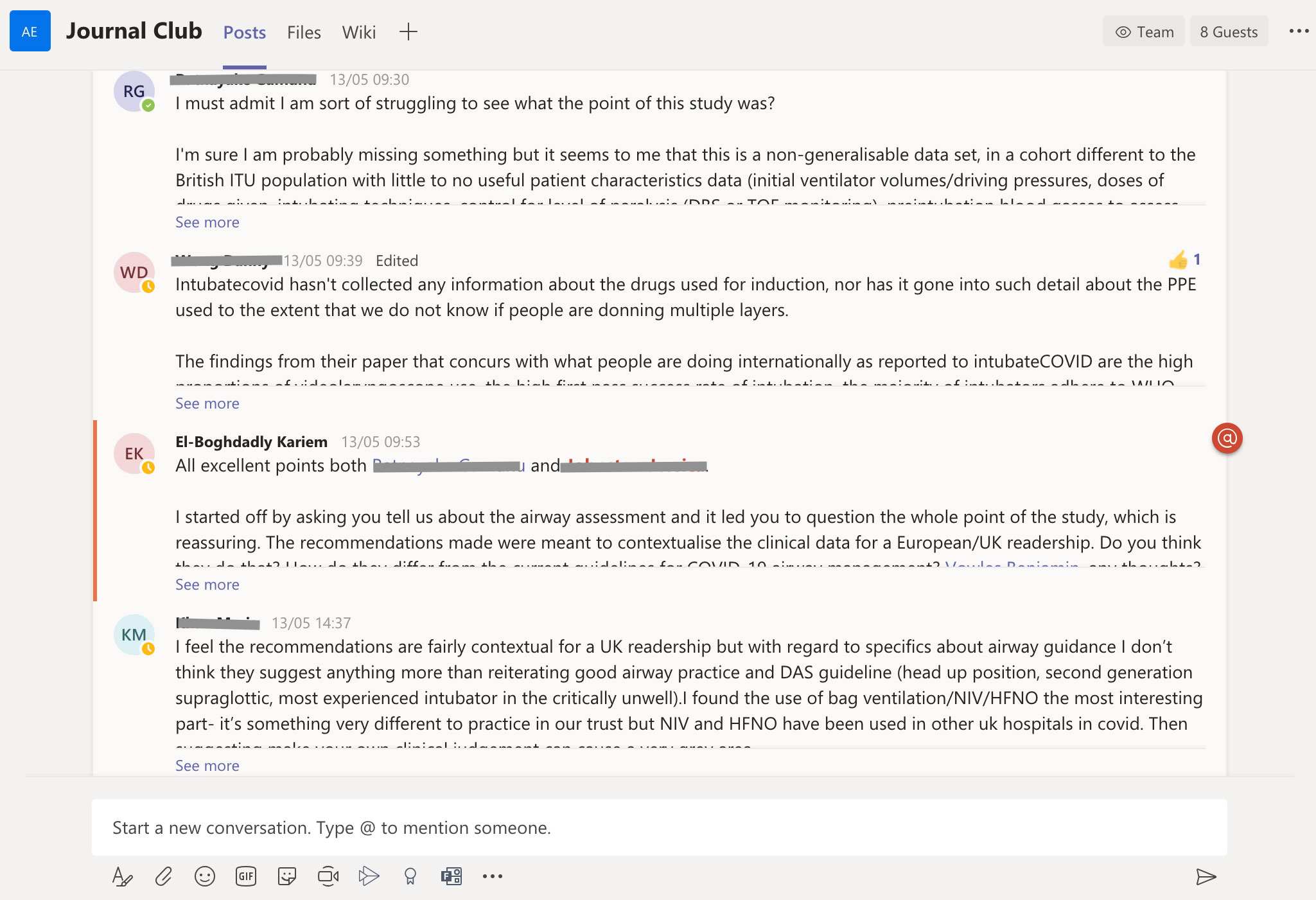A new platform for the journal club: using the opportunity to expand debate
In March 2020 we received notification that all upcoming Health Education England meetings would be postponed until further notice because of the coronavirus pandemic. Our department’s education team removed the usual protected teaching time, and focused instead on ensuring our workforce were suitably upskilled to care for the anticipated influx of patients with COVID-19.
Before the pandemic, one of our department’s educational successes had been our journal club. These well attended meetings, held during the ‘Trainee teaching day’, had a specific focus on improving trainees’ knowledge of the methodologies involved in modern clinical research. Interactive discussions were encouraged, and trainees were supported to write journal correspondence in response to the discussed articles.
As the initial peak of the pandemic passed, we decided to assess the plentiful online resources available to us to restart the journal club on a regular basis. We are a large multi-site tertiary trust with approximately 200 doctors in our directorate, and therefore it is difficult to schedule meetings that our entire staff can access. Our priority was to improve access while retaining a high degree of interaction.
COVID-19 has encouraged our Trust to approve the use of multiple meeting platforms; we selected the Microsoft Teams platform. The format is simple: before the scheduled event we select an article and launch an online conversation in our Microsoft Teams team that includes all the doctors in the directorate. In the build-up to each journal club, our entire medical workforce can partake in the discussion. The meeting then takes place using both a physical and online meeting space. Those involved in the live meeting have audiovisual engagement using Meeting Owl, a 360° videoconferencing system (Owl Labs, Somerville, MA, USA). Physical attendees are divided into smaller groups, adhering to social distancing, and the online group remain together. We allocate each group to a section of the paper, take time for small group detailed discussion, and then reunite for all to report their interpretation. Following the meeting, Microsoft Teams allows for those interested to collaborate and simultaneously edit a response letter.

We have found this format highly successful so far. Instead of limiting the discussion to a single session, we have succeeded in widening the audience and benefited from expanded debates. The live meeting continues to structure engagement, but the online conversation has enabled trainees to reach out to specific individuals in the department in order to add clinical context or research expertise.
Following the initial success, we are keen to see these events expand further. Social media and online blogs are already a popular method to debate and promote new knowledge. In the immediate future, our focus is on engaging more of the directorate across the multidisciplinary team, and expanding to other hospitals in the region. We believe that a silver lining of this pandemic has been to force those who previously may have been reluctant to embrace online platforms. From a journal club point of view, this has the potential not only to increase the number of clinicians who engage with research outcomes, but increase the scope for wider discussions and continuous professional development.
Jessica Johnston
ST6 Anaesthetist
Kariem El-Boghdadly
Consultant Anaesthetist and Research Lead for Theatres, Anaesthesia and Perioperative Care
Guy’s and St Thomas’ NHS Foundation Trust